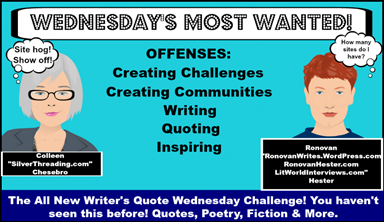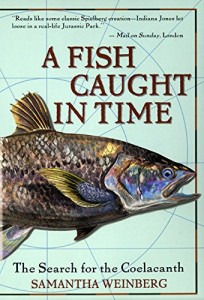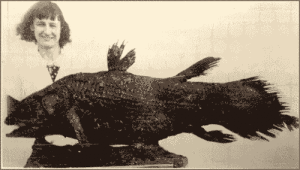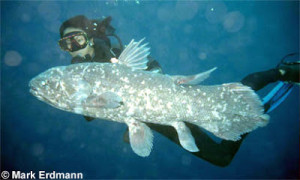by Naomi L. | April 29, 2016 | J.C. Wolfe's Writing, Short Stories |
Never leave the incubator unattended.
That’s the first lesson they teach you when you start at the lab. I wish I had listened.
Thankfully, the explosion was contained to the one room. The building has been evacuated as per safety protocol, and the cleanup crew is busy decontaminating the area while the head of the department has me fill out a statement for the report. I’ve never felt so guilty in my life. That’s saying something.
I have a bad history of putting living beings in danger. I squashed my sister’s hamster as a kid, ran over my neighbor’s cat as a teenager, and lost my friend’s dog on the street in my first year of college. And now I’ve endangered at least a dozen human beings by accidentally unleashing bacteria all over the laboratory. Unknown, unpredictable bacteria. There’s no telling what damage I could have caused if I hadn’t been alone when the incubator burst.
The cleanup crew has finished their work and is filing out of the lab. I’ve been told it’s safe to go back inside. While everyone else leaves, I throw on my cleanroom suit and head in to grab my notes. As I pass by the busted incubator, I feel a horrible sinking sensation in my stomach. Years’ worth of research has been lost tonight, and it’s all my fault.
I open my notebook and flip to the last filled pages. I want to figure out what went wrong. Could I have set the incubator temperature too high by mistake? Was there a malfunctioning piece in the machine? Or is this all just happening now because bad luck follows me wherever I go?
A tear splashes on the corner of the page. I wipe my eyes as I take a pen from the table and scribble a quick note about the explosion. After replacing the pen and skimming through my notes one last time, I close the notebook and glance up at the clock on the wall. It tells me I’ve been here over half an hour, much longer than I’d anticipated. Better start heading out.
Replacing the notebook on the table, I hurry back to the adjoining chamber to remove my suit before I head out, but I stop just inside the doorway when I hear voices in the hall. They must think everyone has already left. Standing still, just out of sight, I listen to them talk about the incident. I recognize two voices: the head of the department and the director of the lab. The director is saying it was lucky no one was injured by the explosion, otherwise the consequences could be catastrophic. The results from the last lab mice test came back this morning; they’ve just discovered that the bacteria we’ve been studying induce a lethal reaction in the subject.
My heart starts to race and I break into a sweat, but I dare not make a sound. The department head asks if we should quarantine everyone in the building, but the director reassures him that the bacteria are not airborne; infection only occurs from direct contact with the subject’s blood. Even if anyone had been contaminated, they wouldn’t last long enough to spread the disease beyond this isolated research facility, as the infection is fatal within hours. The head of the department mutters a curse against “that damn clumsy student”. He wishes I had never set foot in the lab in the first place.
I’ve heard enough. Moving away from the door, I turn and hurry back into the lab. This time I don’t bother with the suit, heading straight through the door toward the notebook and pen on the table before making a beeline for the room on the other side of the floor. Tears return to my eyes as I rush past the broken incubator.
All your fault… All your fault…
I’m no stranger to being cursed. Most people who know me end up wishing they’d never met me, usually after my bad luck causes them some sort of injury. Nobody likes me. Nobody ever wants me around. I don’t blame them. I’m a jinx, a curse, a disease.
You’re the real infection…
I rush into the freezer and slam the door behind me. I lean back against the wall, open the notebook, and start scribbling words on the blank pages in the back, important notes to all the people I’ve loved and wronged. By now the tears have blurred my vision so much that I can barely see the letters anymore. Tremblingly, I rip the last page from the notebook and clutch it close to my chest. Now all that’s left to do is wait.
A strange calm overtakes me as I flip through my notebook for the last time. This is best for everyone, I tell myself. Everything happens for a reason, right? Yes, they’ll all be better off this way. Shivering, I get to the last of my notes, the secret of how some loose shards of shattered glass and metal struck me in the explosion.
My strength begins to leave me and I stifle a cough. I close the notebook as well as my eyes and pull my sleeve down, covering the gash in my hand where the glass tore right through my glove. This is how they’ll find me in the morning, tears frozen on my cheeks and a piece of paper clutched tightly in my hand, containing a single word that says everything…
Contaminated.
by Naomi L. | April 27, 2016 | Blog, Creative Writing |
Yes, it’s another round of Silver Threading and Ronovan Writes‘s Writers Quote Wednesday Writing Challenge! School has been keeping me extra busy and exhausted these days, so I figured now would be a good time to seek inspiration and recharge my creative energy!

The theme for this week was mystery, and the quote I chose is another one from the brilliant mind of Albert Einstein:

The most beautiful experience we can have is the mysterious. It is the fundamental emotion that stands at the cradle of true art and true science. Whoever does not know it and can no longer wonder, no longer marvel, is as good as dead, and his eyes are dimmed. – Albert Einstein
This lovely quote pretty much sums up why I’m so fascinated by both art and science, so for this challenge, I decided to write a free-verse poem inspired as much by Einstein’s words as by my own experience as an “artistic scientist”. Enjoy!
Artistic Scientist
With the mind of a scientist
And the heart of an artist,
I look around me
And I can’t help but wonder:
How does a world
That we’ve known for so long
Still have so many mysteries
Yet to be solved?
Why are we so fascinated
By the world we live in?
What drives humans to discover,
To learn, to know more?
How do the colors and shapes in nature,
In the land and the sea and the sky,
Inspire us to create
Such beautiful works of art?
How do so many animals
That seem so simple
Have such perfect designs
And sharpened instincts?
How does a dog or a cat
Know exactly when to comfort you,
To nuzzle up against you,
Like it senses the pain in your heart?
Why are we always seeking happiness
Yet unable to live without suffering?
Why do dreams so often show you
Secrets you didn’t know you had?
What’s swimming deep down
In the depths of our oceans?
What’s lurking out there
In the great space beyond?
Is there a higher power
Somewhere far above us,
Existing just beyond the boundaries
Of our known limited world?
And how can we humans
Think ourselves so grand
While being mere specks
In the vastness of the Universe?
Mind of a scientist,
Heart of an artist,
I see so many questions
Still longing for answers,
And I smile as I think how
The world is full of
Beautiful discoveries
Just waiting to be made.
So don’t shy away
From the wonders of the world.
Marvel at the mysteries of life,
Lest your eyes become dim,
And you someday find yourself
As good as dead.
Embrace that artistic scientist in you,
And you’ll discover that
In true science and true art,
The most beautiful
Experience we can have
Is the mysterious.
I hope you enjoyed my poem! Be sure to join the Writers Quote Wednesday Writing Challenge and share your quote-inspired works! Thanks for reading!
Writers Quote Wednesday Writing Challenge is a weekly blogging event by Colleen Chesebro of Silver Threading in collaboration with Ronovan Hester of Ronovan Writes. Be sure to check out both these authors’ blogs for your weekly dose of inspiration! Happy writing!
by Naomi L. | April 8, 2016 | Flash Fiction, J.C. Wolfe's Writing |
Science never ceases to surprise me.
I’d have sworn my project was like any other of its kind: collect samples in the field, run DNA tests, analyze and discuss the data, write the paper. Simple as that. Ironically, evolutionary studies don’t usually qualify as groundbreaking, just substantiating at best. We’re all trying to support the same idea: that life is constantly changing.
I studied reef fish biogeography and evolution for half my years at college, so by the time I got into grad school, I knew their patterns pretty well. I didn’t expect anything different when I took on a project about yet another reef fish species. Evaluate its genetic connectivity along the coast, that’s all there was to it. My project was a simple matter of collecting specimens from different locations and comparing their DNA to get a picture of how it was evolving in a given biogeographic province.
Nothing out of the ordinary came up during the sampling and amplification periods. The surprise came when I analyzed the data.
I remember that moment distinctly. Exhausted from weeks of amplifying DNA, reading papers, and writing and rewriting the first parts of my thesis, I was finally sitting down at my computer to compare the sequences. I took a sip of coffee just as the program finally finished running the data… and almost spit it out at the sight of the phylogenetic tree that appeared on the screen. Where I had expected to see a single branch containing all my sequences, there were two separate clades dividing the samples collected from the northern and southern coastal regions. Two geographically close populations that should have been almost identical somehow had a 10% genetic divergence between them. Was that even possible?
An excitement like I hadn’t felt in years overcame me, but I still had to be sure. I ran the data again using three different parameters. All three trees produced the same result: North here, South there. I couldn’t believe my eyes. Yet there it was on my screen, plain as the nose on my face. The results were clear beyond a shadow of a doubt: I was dealing with…
“A new species?!”
I jumped up from my chair and ran next door to my professor’s office. Within the minute, I was showing him the trees on my computer and watching his expression change from puzzled to amazed. I knew exactly why we should be so excited by this result; it meant there were other evolutionary processes at play that we hadn’t expected. In anticipation of the stimulating discussions ahead, I knew the grin on my face wouldn’t disappear for at least a week. My project had just gotten way more interesting.
Science never ceases to surprise me. And I hope it never will.
by Naomi L. | March 9, 2016 | Blog, Creative Writing, Off The Bookshelf |
How about a new book recommendation for this year’s reading list? This one’s a little different from my other Off The Bookshelf entries as it’s actually a nonfiction tale, and a marine biology-themed one at that! I read this book last year for school, and I was so enraptured by this incredible true “scientific epic” that I had to share it on my blog.
So if you’ve never heard of the coelacanth, or you have but want to learn the details of its history, you’re in for a treat! I hope you’ll enjoy my review of this must-read book: A Fish Caught in Time: The Search for the Coelacanth by Samantha Weinberg.

A Fish Caught in Time: The Search for the Coelacanth, by Samantha Weinberg
Summary
A Fish Caught in Time tells the true story of the coelacanth (SEE-luh-kanth), one of the most mysterious and fascinating fishes (yes, “fishes“) in scientific history, as written by English journalist Samantha Weinberg. Originally published in 1999 by HarperCollins, the book recounts the events surrounding this prehistoric fish, from the shocking discovery of a living specimen (Latimeria chalumnae) in 1938 to the discovery and study of a second species (Latimeria menadoensis) 60 years later. The narrative relates these events from the perspective of the researchers who dedicated much of their time and resources to studying this fish, all of whom played an important role in the amazing story of the elusive “King of the Sea”.
Review
I read this book last year in preparation for a Vertebrate Zoology class I had to help teach as part of my Master’s program. My lesson was about the Sarcopterygii class of fishes, so my professor lent me his copy of A Fish Caught in Time as supplementary material for telling the story of the coelacanth. By the time I was done, I was ready to teach an entire semester on this one fish. I never thought I would feel so strongly about any one fish, but then again, the coelacanth is no ordinary fish.

Marjorie Courtenay-Latimer with the modern coelacanth (Latimeria chalumnae) she discovered in 1938
To summarize, the coelacanth was long thought lost to history by the Cretaceous-Paleogene extinction event that wiped out three quarters of the plant and animal species living on Earth (most famously the dinosaurs). It was known only by its fossil record for (almost exactly) 100 years, until, to the world’s surprise and excitement, a living specimen was fished off the South African coast in 1938. Over the next six decades, the coelacanth would be the focus of global headlines, political plays, and scientific rivalries, all the while remaining an enigma to the world that it continues to captivate to this day.
A rare example of a nonfiction story told in a highly narrative form, A Fish Caught in Time does an excellent job of capturing the majesty and mystery of the coelacanth while staying true to the history of its discovery and study. Ms. Weinberg paints such a vivid picture of this 60-year-long story that I couldn’t help but be completely drawn in, as if I were living the story along with the real-life characters: the excitement of discovering the coelacanth wasn’t extinct after all, the rush to find out where it had been hiding for the past 65 million years, the desperation to not only capture a living specimen but keep it alive at the surface, the awe that only a lucky few in history have ever known of watching this deep-sea fish swim in its natural habitat. I’d even go as far as to say that it’s impossible to read this book and not fall in love with the coelacanth!

Arnaz Erdmann swimming with the Indonesian coelacanth (Latimeria menadoensis)
A fair note of warning: oftentimes the story focuses more on the researchers who dedicated their lives to studying the coelacanth than on the coelacanth itself. Readers who hope to gain an insight exclusively into the life of the fish may find this a bit off-putting, but then again, it hardly makes sense to attempt to recount the history around the animal without offering even a glimpse into the lives of the people who shaped that history. It’s much more than a story about a fish; it’s a lesson about what it means to be a researcher. It takes intelligence, curiosity, patience, an unquenchable thirst for knowledge, and an unrelenting passion for science, all of which shine through the pages of this brilliant narration of scientific truth.
Overall, A Fish Caught in Time is a captivating read that any science enthusiast will enjoy. I owe much of my appreciation for the coelacanth to this book, and I recommend it to anyone who wants to immerse themselves in a world of marine biology without being overwhelmed by the technicalities of it all. As quickly becomes evident from the first chapter, science doesn’t have to be fictional to blend well with creative writing!
Inspiration
I love science and I love a good story, but it’s rare that I get to enjoy both at the same time, or at least in the same book. A Fish Caught in Time offers an opportunity to glimpse the joy and passion that goes into conducting good science by presenting it in an enjoyable narrative format. Though much research has gone into understanding the coelacanth, A Fish Caught in Time never conveys that research in a manner too difficult for the layman to comprehend or appreciate, making it an unusual kind of literary gem: a scientific subject made accessible to the general public, that is, a community of non-scientific readers.
So if you appreciate science and a good story based on true events, A Fish Caught in Time may be just the inspiration you need for your creative writing! It certainly has been for me; in my opinion, there’s never too much writing inspiration to be found in science!
by Naomi L. | March 4, 2016 | J.C. Wolfe's Writing, Short Stories |
I really thought amplifying DNA would be easy. Molecular biology seemed simple enough in theory: extract, amplify, sequence, analyze. But I had no idea how difficult it would be to work with so many variables.
After my third failed polymerase chain reaction attempt, I started to wonder what I could be doing wrong.
Was I using the right concentrations of each reagent? Buffer at 1X, MgCl2 at 1.5mM, dNTPs at 200µM each?
Were the primers optimized for my DNA template? Had they been designed for the correct gene? Did they have the right length, melting temperatures, GC content?
Were the PCR cycles optimized? Was I using an annealing temperature within a few degrees of the primers’ melting temperatures? Were the denaturation and extension times long enough to assure proper replication of the DNA fragments?
Was the electrophoresis gel being prepared and run correctly? 1% agarose gel with GelRed in TAE buffer, run for about 10V per centimeter between the electrodes?
Or what if – shudder – the problem was in the DNA itself? What if the extraction had failed, and I’d have to start the entire project over from Square One?
No, no, calm down, I told myself. One step at a time. First, eliminate the variables you know aren’t the problem. There’s no reason the extraction should have failed; the quantification returned optimal concentrations of DNA. These are the same universal primers used in countless other studies, specifically designed for the cytochrome-b gene. The thermocycler and the electrophoresis apparatus have already worked before. There’s nothing wrong with the gel because the ladder and primers appear in the UV photos. That’s already five ticks off the checklist.
Now start with a positive control, a sample you know has worked with these primers before. PCR #4: did it fail to amplify along with the others? Yes. Good, then the problem isn’t the DNA.
Next step: new aliquots. Replace the water, the buffer, the MgCl2, the dNTPs, even the primers. Everything must be fresh to minimize contamination. Double-check the concentrations before preparing the mix. PCR #5: still no bands in the gel. No problem; just move on to the next step.
Try altering the reagent concentrations. Use more DNA template, double the primers, increase the amount of MgCl2. PCRs #6-8: nothing. Don’t panic, it’s all part of the process. You’re zeroing in on the problem now.
Adjust the PCR procedure. Increase the number of cycles, raise the annealing temperature in increments of 2ºC, lengthen the initial denaturation and final elongation steps. PCRs #9-12: still nothing. It’s okay, every failure is just another step closer to success. These tears are totally normal; nothing to be ashamed of.
For weeks, I tried everything I could think of. I replaced the reagent aliquots three times. I used half a dozen standard PCR procedures from various troubleshooting references. I ran gradient tests and touchdown tests and hot-start tests. Zero, nothing, zip.
Finally, after over a month of PCR attempts and no results to show for it, I was at my wit’s end. One morning, when I was alone in the lab, I broke down into a sobbing mess. I couldn’t look at the thermocycler anymore, that beast of a machine that I had to work with every day. I felt like a knight facing off against the same dragon over and over, knowing that hours of battling would only get me burnt every single time.
So I resolved to take a break from it all. No more PCRs for a while, not until I could work up the energy to start trying again. Today, I would just sit at the desk and read papers while indulging in a bag of cookies. Stale cookies. Really stale cookies. Seriously, how old were these?
I turned the bag over to check the date on the back…and that was when it hit me. Could it be? Immediately I dropped the bag and ran to the freezer. The stock solutions were stored in the back of the bottom shelf; I searched through them one by one until at last I found what I was looking for, printed clear as day inside the lid of the Taq DNA polymerase box. “Expiration date: Oct 2010.” Of course! No wonder none of my reactions were working: the enzyme was over five years old!
My first grin in weeks spread across my face, and I was suddenly overcome with an urge to shout “Eureka!” I hurried to my professor’s office and told him about the expired reagent. He quickly ordered a new stock and it arrived within two weeks. Sure enough, the next PCR I ran yielded the most beautiful set of bright DNA bands I had ever seen in a gel. I wanted to kiss that UV photo. My very first successful DNA amplification! And it only took two months longer than expected.
Never again will I underestimate the work of a scientist. Molecular biology may seem simple in theory, but having learned my lesson the hard way, next time I’ll be prepared for the challenge of working with too many variables.







Recent Comments